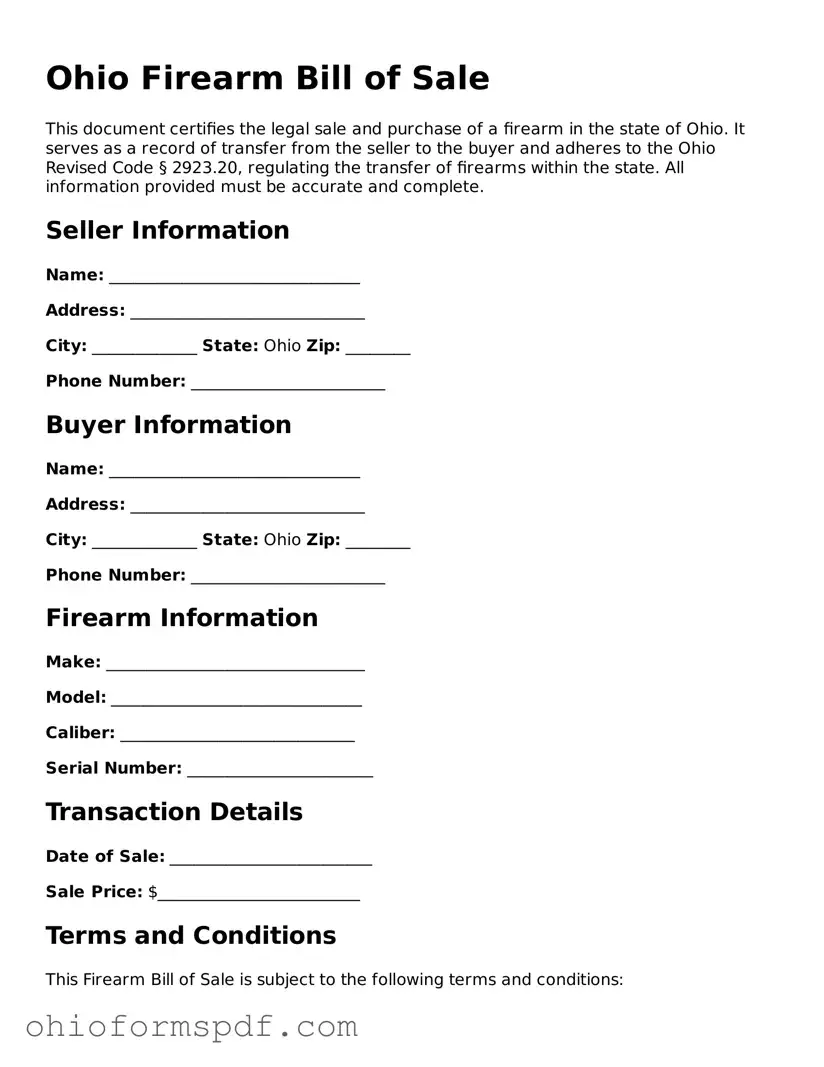What is an Ohio Firearm Bill of Sale?
An Ohio Firearm Bill of Sale is a legal form that documents the transfer of ownership of a firearm from a seller to a buyer in the state of Ohio. This document typically includes details such as the names and addresses of the seller and buyer, the date of sale, the sale amount, and a description of the firearm, including the make, model, and serial number. It serves as proof of purchase and can be used for record-keeping purposes.
Is an Ohio Firearm Bill of Sale required by law?
In Ohio, while law does not mandate the use of a firearm bill of sale for private transactions, it is highly recommended as a record of sale. It provides both the seller and the buyer with evidence of the transfer, which can be useful for legal protection, personal records, and registration purposes.
What information should be included in a Firearm Bill of Sale?
The essential information to be included in a Firearm Bill of Sale consists of the seller's and buyer's name and address, the sale date, the transaction amount, and comprehensive details of the firearm (make, model, caliber, and serial number), terms and conditions of the sale, and signatures of both parties involved.
Do both parties need to sign the Ohio Firearm Bill of Sale?
Yes, both the seller and the buyer must sign the Ohio Firearm Bill of Sale for it to be considered valid and complete. It is also advisable to have the document witnessed or notarized, although this is not a legal requirement in Ohio.
Should the Ohio Firearm Bill of Sale be notarized?
While not a requirement, having the Ohio Firearm Bill of Sale notarized adds an extra layer of authenticity to the document. Notarization can help in the event of any legal disputes by verifying the identity of the signatories and the date of signing.
Can an Ohio Firearm Bill of Sale be used for registering a firearm?
Ohio does not have a specific firearm registration requirement for most firearms. However, an Ohio Firearm Bill of Sale can be useful for personal records and proving ownership. For specific firearms that may require registration or for use in another state that requires registration, the bill of sale might be required as part of the documentation.
What happens if a Firearm Bill of Sale is not used in a firearm transaction in Ohio?
If an Ohio Firearm Bill of Sale is not used, it might be more difficult to prove ownership or transfer of the firearm. In the event of legal issues, disputes, or questions regarding the firearm's history, lacking a bill of sale can lead to complications. It provides a layer of security and clarity for both the buyer and the seller.
Can a firearm be sold to another individual without a background check in Ohio?
In Ohio, private sales of firearms between individuals do not require a background check by law. However, it is illegal to knowingly sell a firearm to someone prohibited from possessing a firearm, such as a convicted felon. Sellers are encouraged to exercise due diligence during the sale.
